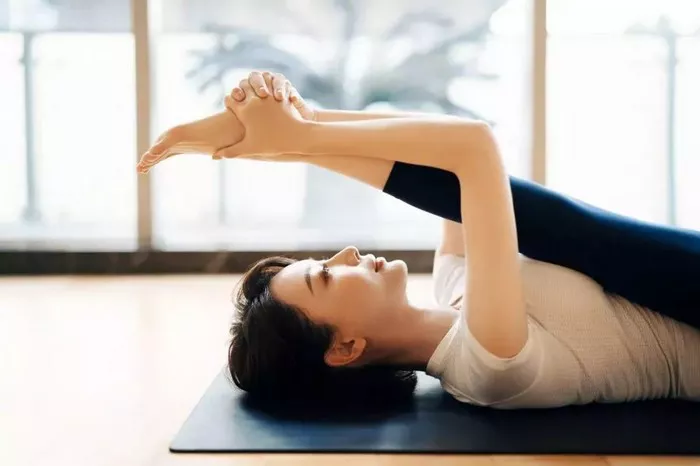In the bustling world of yoga, where myriad styles and approaches beckon practitioners, Purna Yoga stands out as a holistic system that integrates physical postures, meditation, philosophy, and lifestyle principles. Rooted in the teachings of Sri Aurobindo and the Mother, Purna Yoga offers a path to self-realization and holistic well-being. In this comprehensive guide, we delve into the essence of Purna Yoga, exploring its history, principles, practices, and benefits.
Origins and Philosophy
Purna Yoga traces its lineage back to the teachings of Sri Aurobindo and the Mother, prominent Indian spiritual figures of the 20th century. Sri Aurobindo espoused the concept of integral yoga, which seeks to harmonize all aspects of the individual – physical, mental, emotional, and spiritual – leading to a complete transformation of consciousness. Integral yoga emphasizes the synthesis of various yogic paths, including hatha yoga (physical postures), raja yoga (meditation and mental discipline), karma yoga (selfless service), and bhakti yoga (devotion).
Central to the philosophy of Purna Yoga is the idea of “purna,” which means completeness or wholeness in Sanskrit. Purna Yoga recognizes that true fulfillment comes from integrating all dimensions of our being – body, mind, and soul – and aligning ourselves with the divine essence within. By cultivating awareness, compassion, and self-reflection, practitioners of Purna Yoga aim to realize their fullest potential and live a life of purpose and joy.
Principles of Purna Yoga
Purna Yoga is guided by a set of principles that serve as the foundation for its practice and philosophy:
1. Alignment: Proper alignment is emphasized in physical postures (asanas) to ensure safety, balance, and optimal energy flow within the body. Through precise alignment cues and adjustments, practitioners learn to create stability and openness in their practice, fostering a deeper connection between body and mind.
2. Heartfulness: Purna Yoga encourages cultivating a heart-centered approach to practice, infused with qualities such as compassion, gratitude, and loving-kindness. Practitioners are invited to bring awareness to the heart center (anahata chakra) and to approach their practice with an attitude of openness and receptivity.
3. Integration: The integration of yoga philosophy into daily life is a cornerstone of Purna Yoga. Beyond the physical postures, practitioners are invited to explore philosophical concepts such as self-inquiry, mindfulness, and non-attachment, applying these teachings to their interactions with others and the world around them.
4. Wholistic Lifestyle: Purna Yoga advocates for a holistic approach to health and well-being, encompassing not only physical fitness but also mental clarity, emotional balance, and spiritual growth. This may include dietary choices, stress management techniques, and lifestyle practices that support overall vitality and longevity.
5. Self-Transformation: At its core, Purna Yoga is a path of self-transformation and self-discovery. Through consistent practice and self-inquiry, practitioners uncover layers of conditioning and limitations, gradually awakening to their true nature as divine beings. This journey of inner exploration leads to greater self-awareness, authenticity, and inner peace.
Practices of Purna Yoga
Purna Yoga offers a diverse range of practices designed to nourish and harmonize the body, mind, and spirit. Some of the key components include:
1. Asana Practice: Purna Yoga incorporates a variety of physical postures, ranging from gentle stretches to dynamic flows, with an emphasis on alignment, breath awareness, and mindfulness. Asanas are sequenced systematically to build strength, flexibility, and balance, while also promoting relaxation and stress relief.
2. Pranayama: The practice of pranayama, or yogic breathing techniques, plays a vital role in Purna Yoga. Through conscious control of the breath, practitioners learn to regulate the flow of life force energy (prana) in the body, promoting vitality, clarity, and emotional balance.
3. Meditation and Mindfulness: Meditation is a cornerstone of Purna Yoga, providing a direct means of quieting the mind, deepening self-awareness, and connecting with the innermost essence of being. Various meditation techniques, including guided visualization, mantra repetition, and breath awareness, are employed to cultivate inner stillness and insight.
4. Philosophical Study: Purna Yoga encourages the study and contemplation of yoga philosophy as a means of deepening understanding and integrating spiritual principles into daily life. Topics may include the nature of reality (vedanta), the path of selfless action (karma yoga), and the science of self-realization (jnana yoga).
5. Seva (Selfless Service): Service to others (seva) is regarded as a fundamental aspect of Purna Yoga, reflecting the interconnectedness of all beings and the practice of karma yoga. By offering our time, skills, and resources for the benefit of others, we cultivate humility, compassion, and a sense of purpose beyond self-interest.
Benefits of Purna Yoga
The practice of Purna Yoga offers a multitude of benefits for physical, mental, emotional, and spiritual well-being:
1. Physical Health: Regular practice of asanas improves strength, flexibility, and cardiovascular health, while also reducing tension and promoting relaxation. Pranayama enhances respiratory function and supports overall vitality.
2. Mental Clarity: Meditation and mindfulness practices cultivate mental clarity, focus, and emotional resilience, reducing stress and anxiety. By quieting the chatter of the mind, practitioners experience greater peace and equanimity.
3. Emotional Balance: Purna Yoga encourages the cultivation of heart-centered qualities such as compassion, gratitude, and forgiveness, fostering emotional balance and harmonious relationships. Through self-inquiry and self-compassion, practitioners learn to navigate the ups and downs of life with greater ease and grace.
4. Spiritual Growth: As a path of self-realization, Purna Yoga provides a framework for spiritual growth and inner transformation. By exploring the depths of consciousness and connecting with the divine essence within, practitioners awaken to a sense of interconnectedness and purpose beyond the egoic self.
5. Holistic Well-Being: Ultimately, Purna Yoga offers a holistic approach to well-being that integrates body, mind, and spirit. By aligning ourselves with the principles of purna (wholeness) and living in harmony with the natural rhythms of life, we experience a profound sense of fulfillment and vitality.
Conclusion
In a world often characterized by fragmentation and disconnection, Purna Yoga offers a path to wholeness, integration, and self-realization. By honoring the interconnectedness of all aspects of our being – body, mind, and soul – and aligning ourselves with the divine essence within, we embark on a journey of inner exploration and transformation. Through the practice of asanas, pranayama, meditation, and self-inquiry, we cultivate physical health, mental clarity, emotional balance, and spiritual growth, ultimately experiencing the joy of living in alignment with our true nature. As we embody the principles of Purna Yoga in our daily lives – alignment, heartfulness, integration, wholistic lifestyle, and self-transformation – we awaken to the fullest expression of ourselves and contribute to the creation of a more harmonious and compassionate world.
FAQs:
What is the difference between Purna and Sampurna?
Purna and Sampurna both mean “complete” in Sanskrit. However, “Purna” typically refers to something complete in itself, while “Sampurna” implies completeness with respect to a set or collection.
What is poorna in Sanskrit?
“Poorna” in Sanskrit translates to “full” or “complete.” It signifies a state of wholeness or fulfillment, often used to describe spiritual completeness or perfection.
Is Hatha Yoga tantric?
Hatha Yoga, while containing elements that can be traced back to Tantra, is not exclusively tantric. It is a broader system of yoga that focuses on physical postures (asanas) and breathing techniques (pranayama) to achieve physical and mental balance.





















